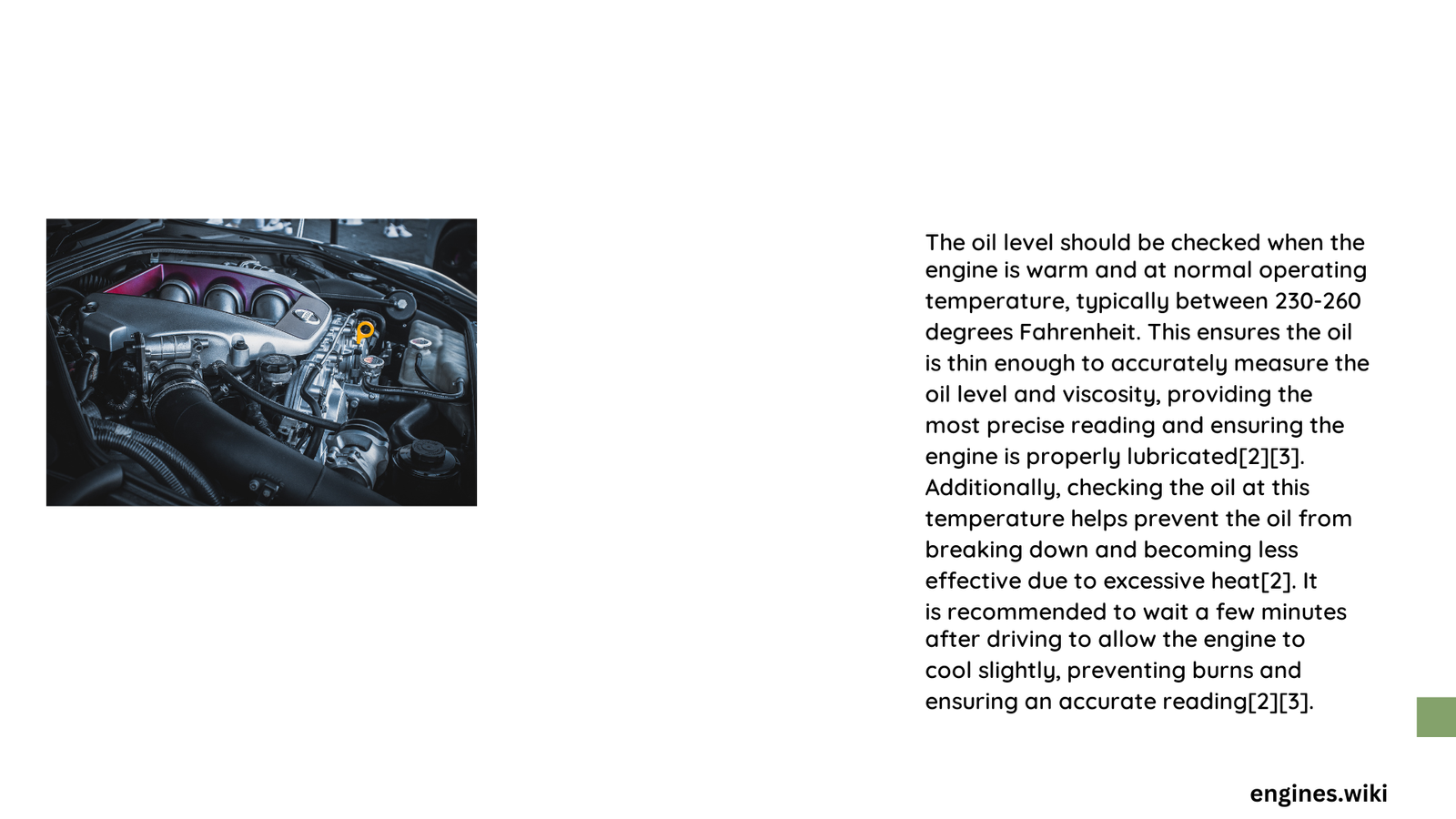Checking your vehicle’s oil level requires precision and understanding of engine dynamics. When the engine is warm and running, oil viscosity and distribution provide the most accurate measurement, allowing drivers to assess lubrication levels effectively and prevent potential engine damage. Proper oil level monitoring is crucial for maintaining vehicle health and preventing costly mechanical failures.
Why Check Oil Level When Engine is Warm?
Vehicle engines operate most efficiently when oil is at its optimal temperature range. Checking oil levels during warm conditions ensures:
- More accurate oil measurement
- Better oil viscosity assessment
- Precise understanding of actual lubricant distribution
What Happens During Warm Engine Oil Check?
When an engine reaches normal operating temperature (typically 230-260°F), several critical processes occur:
| Temperature Range | Oil Behavior | Measurement Accuracy |
|---|---|---|
| 200-230°F | Moderate Viscosity | Moderate Accuracy |
| 230-260°F | Optimal Viscosity | High Accuracy |
| >260°F | Potential Thinning | Reduced Accuracy |
How to Safely Check Oil Level in Warm Conditions?
Preparation Steps
- Park vehicle on level ground
- Allow engine to run for 5-10 minutes
- Turn off engine
- Wait 3-5 minutes for oil settlement
Dipstick Procedure
- Locate dipstick (usually yellow/orange handle)
- Pull out and wipe clean
- Reinsert completely
- Remove and check oil level markings
What Tools Do You Need?
Essential tools for accurate oil level checking include:
– Clean lint-free cloth
– Work gloves
– Proper lighting
– Owner’s manual
Common Mistakes to Avoid
- Checking oil immediately after stopping engine
- Checking on uneven surfaces
- Using dirty or damaged dipstick
- Ignoring manufacturer’s specific recommendations
Technical Insights
Oil behaves differently at various temperatures. When warm, it:
– Becomes less viscous
– Distributes more evenly
– Provides more accurate measurement of actual volume
Professional Recommendations
Automotive experts suggest:
– Check oil every 1,000 miles
– Use consistent checking method
– Monitor between “MIN” and “MAX” markers
– Replace oil at recommended intervals
Safety Precautions
⚠️ Warning:
– Wear protective gloves
– Avoid touching hot engine components
– Work in well-ventilated area
Conclusion

Understanding how to check oil level when the engine is warm ensures optimal vehicle performance and longevity. By following precise procedures and maintaining regular checks, drivers can prevent potential engine complications.
